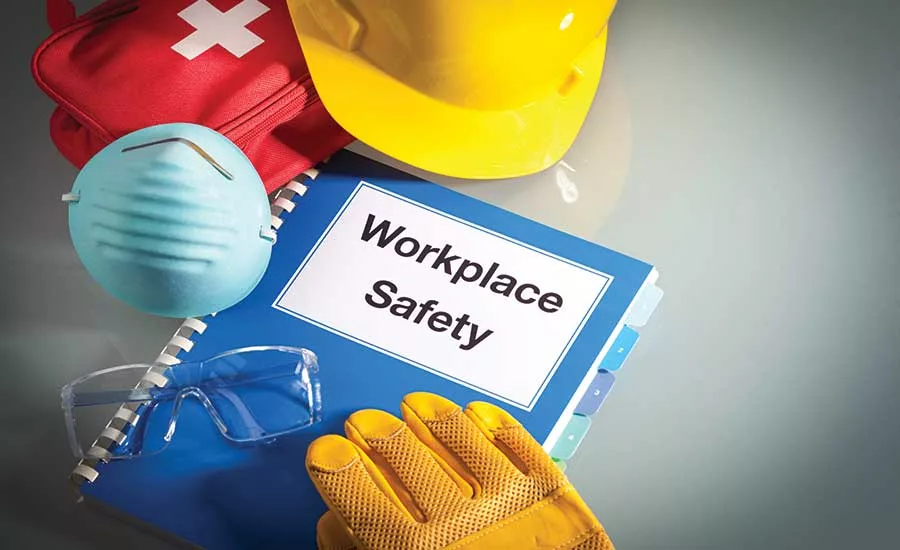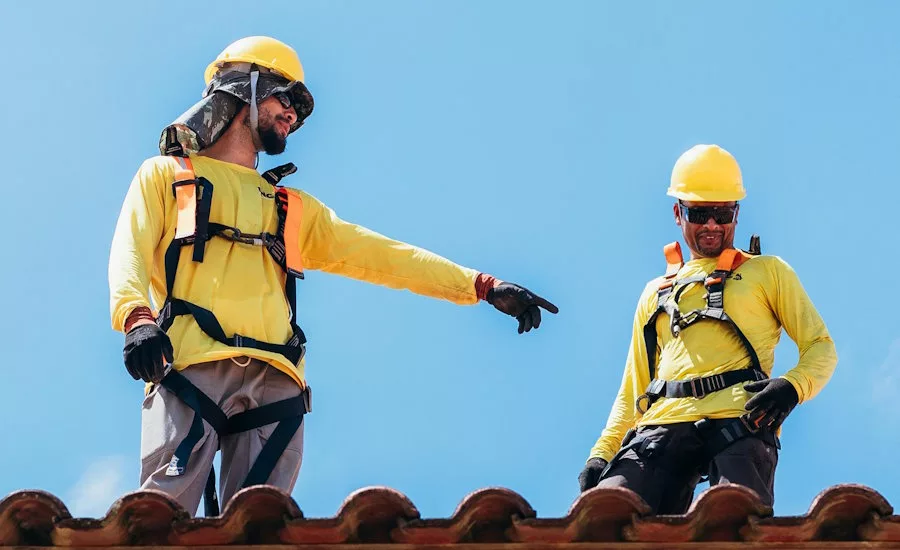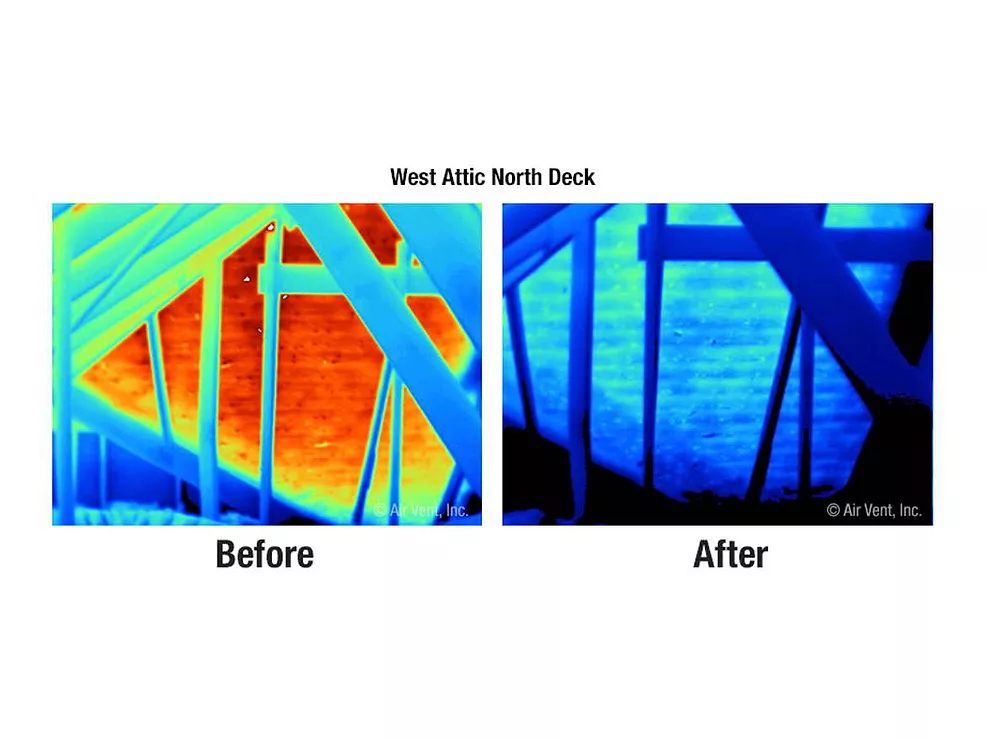Five Annual Safety Checkpoints for Roofing Contractors
Experiencing equipment failures or an on-the-road accident could cost you time and money.


While most drivers are eager to get in their vehicles and get from point A to B as quickly as possible, a good roofing contractor who’s responsible for one or more trucks knows a trip always begins with a thorough and documented vehicle inspection. That covers everything from checking fluid levels to brakes, electronics, tires, signaling devices and an overall visual walk-around of the vehicle. There’s no specific time limit, but depending on the vehicle and load, it should take about 30 minutes for a proper pre-trip inspection before hitting the road. This procedure is as simple as following a checklist that regardless of time, can be critical to having a safe, uneventful trip. After all, experiencing either an equipment failure or an on-the-road accident due to such failure could cause delays and lost expenditures well in excess of that time needed for a pre-trip inspection.
Every workday on a construction site should include a pre-work inspection period as well. It should be conducted either by the employer or his/her competent person (CP) on-site. The U.S. Bureau of Labor and Statistics has determined that the root cause of most workplace accidents can be attributed to 60 percent acts and 40 percent conditions. While conditions and needs on every jobsite can vary, I’d suggest the following five dependable checkpoints to be considered in everyone’s daily pre-job inspection:
Are Plans Specific and Available?
Each employer should have a safety and health plan specific to each jobsite. This written document outlines methods and means required to perform the necessary tasks for the scope of work. It’s a set of safe-work-practices (SWP) meant for each employee to practice, and it should “live, breathe and bleed” just like the workers it’s designed to protect. Anytime the SWPs don’t resemble the existing work conditions, the CP should be notified and all work should be stopped immediately. Until the acts and/or conditions resemble the hazards and control methods specified in the employer’s safety plan, his/her employees have both the privilege and duty to avoid and refuse unsafe work. Until the proper hazards have been identified and adequately controlled by the CP, exposure to such hazards must be avoided. There’s no such thing as a “boilerplate” safety program.
The Job Safety Analysis
The Occupational Safety and Health Administration (OSHA) implemented a three-tiered analysis that includes: 1) phases of the job; 2) potential and existing hazards; and 3) engineering, administrative and PPE hazard controls. Many contractors supplement these tiers with the cost of implementing each hazard control; and periodic verification by the CP that nothing significant has changed during the evolving job schedule. This verification often becomes a key factor in evaluating the CP’s consistency and overall performance in cases that make it to court.
Historically, calculating the real cost of implementing safety on the job is as important a line item in any bid estimate as material, labor and equipment. Change orders can often prove dangerous or even deadly if no one’s evaluating them for any potential hazards which may silently “hitch a ride.”
Assigning Risk Assessment Numbers
Every step of each task should be evaluated through a risk assessment matrix (RAM). This is a table that measures the probability of something going wrong compared to the severity of an incident. A step with an A-1 Hazard Assessment score indicates a task which has an extremely high probability of a very serious or fatal accident to one or more employees. A step with a D-4 Hazard Assessment score indicates a task which has a very low probability of causing a mild injury without any serious consequences. Arbitrary divisions can be assigned between these extreme numbers to determine high, moderate and low risk groups of work tasks. The RAM enables each employee to review an upcoming task in the proper perspective and verifies to the employer that each employee is sufficiently trained.
With this simple hazard communication method in place, the era of treating construction workers like mushrooms rather than professionals can be eliminated to everyone’s benefit and profit.
Follow The 3-E’s in Order
Educate: The first order of any business is to train its employees adequately in the pertinent legal standards mandated by OSHA, before they are exposed to any hazards. The common use of “tribal safety knowledge” passed onto new hires by unqualified trainers has been the basis of many lost court cases involving worker injury.
Enact: No safety trainer can be expected to certify that all trainees will always choose to comply with the standards in which they’re trained. It takes a willingness on the part of every employee to enact the safe work practices they learned. In practice, every employee is the last one in a very long line of participants leading up to a potential accident. Knowing that the next step in the task has a potential risk doesn’t always ensure that an employee will follow the SWPs they learned, including the right to refuse unsafe work. They must realize that compliance is a condition of employment and failure to comply is negligence that may risk a coworker’s safety.
Enable: Has the employer established procedures and protocols that enable employees to enact the SWPs in which they were educated? It requires all three ‘E’s’ in order to achieve zero accidents. It’s common knowledge that one of the contributing factors discovered during an accident investigation is a failure of middle management (project manager, supervisor, foreman) to enable safe work conditions when confronted with tight budgets and short schedules. That’s the primary reason why the foreman cannot feasibly fulfill the duties of a CP, who must immediately assume all of the employer’s authority and obligations to prevent accidents, injuries and deaths on the job.
Do Roofers Have a Say?
It’s a violation of federal law if employees aren’t given any opportunity to speak to the applicability of their corporate safety plan. It is, after all, the primary objective of this document to prevent injury, illness and death of the employees, rather than the employer. It’s only common sense, as the employer is gainfully employing the entire human being, including what’s above their shoulders and between their ears. Taking advantage of an employee’s working knowledge of their actual worksites gives the proactive employer a direct advantage over his reactive competition down the road, with fewer accidents, less lost-work-time, increased productivity and reduced overhead. Once issued their personal copy of the safety plan, the employer should offer a training meeting to review it.
Each employee should sign and date an acknowledgement form, certifying that they received, read and understood the content and importance of the training as a condition of employment. Most state labor laws require such forms be retained in the employee’s personnel file before any stipulated penalties for non-compliance may be legally imposed by their employer. For example, a reasonable person wouldn’t ground a child for missing a curfew if you never informed them of the actual curfew time.
Conclusion
From coast to coast there are only two species of “profit trees” in today’s construction marketplace. First is the native, and nearly-extinct, version aptly named the hard work model. It has been our prototypical means of profit and growth since the troops came home in 1945 with the rearview-vision of Hoover’s “chicken in every pot.” Unfortunately, this involves an unrealistic menu of ever-increasing productivity, cheap labor, minimal overhead, bulk material purchases and saturation marketing in order to reduce costs. There’s very little room at the top branches of this model for many contractors to share in any finite profits available in the market. And when corporate profits are balanced on this head of a pin, it doesn’t take more than a single accident to upset your goals, resulting in months, if not years to recover their associated losses.
On the other hand, there’s a self-insured bond model. Here we have employers with significantly fewer OSHA 300 logged accidents over a three year annual basis, thus lowering their worker’s comp experience modification rate (EMR) well below the national average for their occupation code. The elimination of this largest corporate overhead line item can be realized as a yearly tax-free bonus, producing profits that were previously unattainable in the other model. In addition, the bidding advantage created by the bond model can decidedly separate those who will profit and grow from others. An EMR well below the national average could place a contractor on a “preferred” bidders list, enabling them to bid 10 percent higher or more than a competitor not on the list, and still win the job. The time and money required to build such a behavior-based model can be daunting, but the results are substantially profitable and long lasting.
The dedication and investment required to achieve long-term success of this profit model depends primarily on: 1) The strength and integrity of your workplace safety program; and 2) The bond of trust with your employees and their families. Only a dedicated and loyal workforce can deliver your corporate goals, so your investment in their health and safety must always be your core mission. To activate their dedication and achieve their loyalty, workplace safety must come first, quality second and productivity third. I strongly recommend painting this over the entrance to your corporate office as well as on both sides of all of your company vehicles. No exceptions or deviations will be taken, despite an occasional loss in profit or delay in schedule. Worker’s lives must matter to the owner of any company.
These five critical checkpoints in your daily company audits were established to guide your company to competency. They can guide you to a new profit model less affected by the vagaries of the local and national economy and more dependent on your commitment to your worker’s safety and health. I would only add this final thought: If you wouldn’t want your loved ones anywhere near your jobsites, then perhaps a change is due.
Looking for a reprint of this article?
From high-res PDFs to custom plaques, order your copy today!







